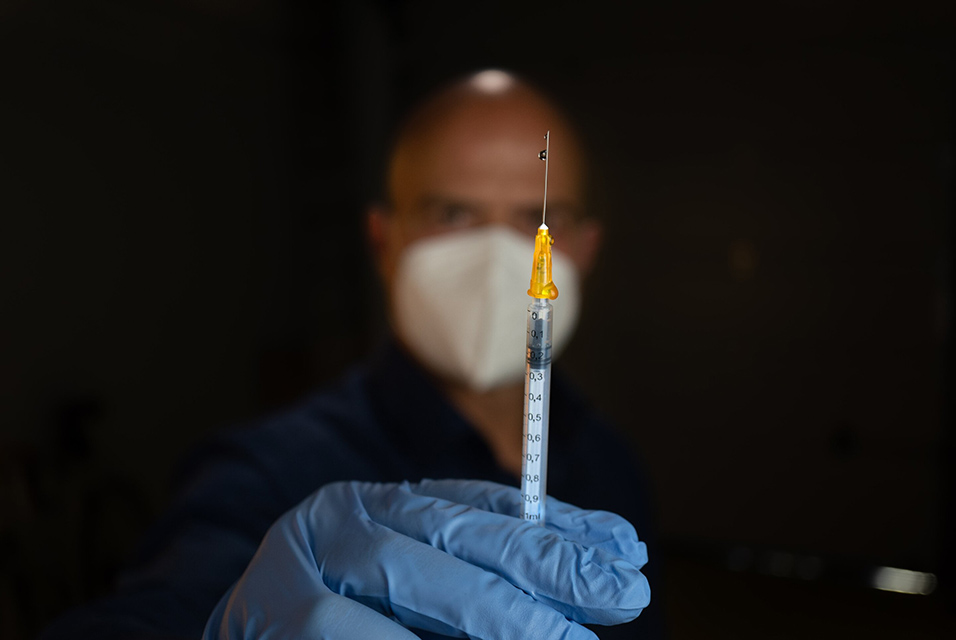LONDON.- Six different COVID-19 boosters are safe and provoke strong immune responses in people who have previously received a two-dose course of ChAdOx1-nCov19 (Oxford–AstraZeneca [ChAd]) or BNT162b2 (Pfizer-BioNTech [BNT]), according to the first randomised trial of boosters given after two doses of either vaccine, published in
The Lancet.
ChAd has now been deployed in more than 180 countries and BNT in more than 145 countries. Two doses of ChAd and BNT have shown 79% and 90% protection, respectively, against hospitalisation and death after six months in several studies. However, protection against COVID-19 infection wanes over time. That has driven consideration of boosters to protect the most vulnerable, lessen pressure on health services, and mitigate economic impacts. However, little data exist on the comparative safety of COVID-19 vaccines, and the immune responses they stimulate, when given as a third dose.
The COV-BOOST study looked at safety, immune response (immunogenicity) and side-effects (reactogenicity) of seven vaccines when used as a third booster jab. The vaccines studied were ChAd, BNT, NVX-CoV2373 (Novavax [NVX]), Ad26.COV2.S (Janssen [Ad26]), Moderna [mRNA1273], VLA2001 (Valneva [VLA]), and CVnCov (Curevac [CVn]).
"The side effect data show all seven vaccines are safe to use as 3rd doses, with acceptable levels of inflammatory side effects like injection site pain, muscle soreness, fatigue. Whilst all boosted spike protein immunogenicity after two doses of AstraZeneca, only AstraZeneca, Pfizer-BioNTech, Moderna, Novavax, Janssen and Curevac did so after two doses of Pfizer-BioNTech", comments Professor Saul Faust, trial lead and Director of the NIHR Clinical Research Facility, University Hospital Southampton NHS Foundation Trust.
"It's really encouraging that a wide range of vaccines, using different technologies, show benefits as a third dose to either AstraZeneca or Pfizer-BioNTech. That gives confidence and flexibility in developing booster programmes here in the UK and globally, with other factors like supply chain and logistics also in play", adds Professor Faust.
"It's important to note that these results relate only to these vaccines as boosters to the two primary vaccinations, and to the immune response they drive at 28 days. Further work will generate data at three months and one year after people have received their boosters, which will provide insights into their impact on long-term protection and immunological memory. We are also studying two of the vaccines in people who had a later third dose after 7-8 months although results will not be available until the new year."
A randomised, phase 2 trial of seven booster vaccines was conducted, with the third doses given 10-12 weeks after initial two-dose courses of ChAd or BNT. The trial involved 2,878 participants in good health recruited at 18 UK sites between June 1st and June 30th 2021. Participants had received their first doses of ChAd or BNT in December 2020, January or February 2021, and second doses at least 70 days before enrolment for ChAd and at least 84 days for BNT. Around half of participants received two doses of ChAd and half two doses of BNT. The control vaccine used was a meningococcal conjugate vaccine (MenACWY).
Participants were aged 30 years or older, with approximately half aged 70 years or older. The average age of participants who received ChAd was 53 years in the younger age group and 76 years in the older age group. Average ages for BNT were 51 and 78 years, respectively.
Thirteen experimental and control arms of the trial (seven vaccines plus three at half dose and 3 control arms) were split into three participant groups, with six sites per group. Group A received NVX, half dose NVX, ChAd, or a control. Group B received BNT, VLA, half dose VLA, Ad26 or a control. Group C received Moderna, CVn, which was withdrawn from further clinical development in October 2021, half dose BNT, or a control.
Primary outcomes were adverse effects seven days after receiving a booster, and levels of antibodies targeting the spike protein on the surface of COVID-19 virus cells—which enables them to enter human cells—after 28 days, compared to controls. Secondary outcomes included the response of T cells—which play a key role in the immune response to viral infection, and seem important in controlling disease severity—to wild type, alpha, beta, and delta variants. Both antibody-mediated immunity and T-cell response are known to be important in vaccine effectiveness.
Increases in anti-spike protein antibody levels after 28 days varied across the vaccines. After two doses of ChAd these ranged from 1.8 times higher to 32.3 times higher according to the booster vaccine used. After two doses of BNT the range was 1.3 times higher to 11.5 times higher. Significant T-cell responses were reported in several combinations.
At 28 days, all booster results were similar for participants aged 30-69 years and those aged 70 years or older. The authors warn that the boost ratios should be interpreted with caution because they relate to immunogenicity rather than protection against disease, and the relationship between antibody levels at day 28 and long-term protection and immunological memory is unknown.
Reactions to all seven vaccines were similar, with fatigue, headache, and injection site pain most often reported. These were more commonly reported by those aged 30-69. 912 of the 2,878 participants experienced a total of 1036 adverse events—effects beyond these side effects, 24 of which were severe.
The study has several limitations. Due to pandemic timelines and the need to generate data to inform policy in September 2021, the interval between second and third doses was shorter in some participants than between their first two doses. Several studies have shown that a longer time period between the first and second doses may improve immunogenicity, including improved antibody responses when the initial BNT doses are spaced by 12 weeks rather than 3 weeks. This could mean that the boost in immunity is lower than if longer dose intervals had been used. This is being investigated in a trial amendment in which third vaccine doses are offered to people who previously received a control. Only recruiting people over 30 years old limits the generalisability of the findings to younger age groups, as studies have generally shown that the vaccines tend to provoke a stronger immune response in younger people, and slightly higher rates of adverse effects. Participants were also mostly white. Not all vaccines could be randomised together due to trial design, limiting comparison between site groups, and logistical issues meant not all vaccines could be tested at half dose. Further analysis will compare vaccines in different groups.










